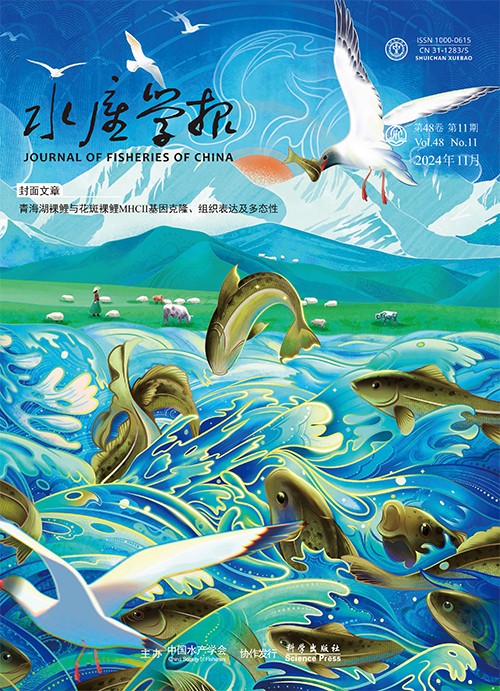Genetic diversity and genetic differentiation of swimming crab (Portunus trituberculatus) from six geographical populations of China Sea based on mitochondrial D-loop gene
Q4 Environmental Science
引用次数: 6
Abstract
A swimming crab is one of the most economically important edible marine crabs in the East Asia area,and it is widely distributed in the coastal waters of China,Japan and Korea.To assess the level of genetic diversity and genetic variation of swimming crab populations along China coasts,the species from the six geographical populations from China Sea(Dalian,Dongying,Lianyungang,Zhangzhou,Zhoushan and Zhanjiang)were studied based on mitochondrial D-loop whole gene sequences.There were 1 141 bp,185 variation sites and 129 parsimony informative sites in D-loop whole gene sequences.And there were 48 haplotypes among 60 swimming crab individuals.Nucleotide diversity index and Haplotype diverstity index together revealed a high genetic diversity and low selective effect for swimming crab populations in China Sea.The genetic differential index FST of total six populations was 0.189 72,which meant that the genetic differentiation among populations was moderate and significant(P0.05)and the inferred differentiation time was about(196.8-260.5)×103 years.Low gene flow indicated that there were genetic differentiations among the fifteen groups,except between LYG and DY,ZJ,ZZ,respectively,in addition between ZJ and ZZ(Nem5).Especially,there were pronounced levels of genetic differentiation between ZS and the others and a moderate genetic differentiation between DL and LYG,DY,ZJ and ZZ,respectively.The genetic distance had no significant correlation with geographical distance,so there may be more intricate reasons in population occurrence and spread.基于线粒体D-loop基因的中国6个地理居群梭子蟹遗传多样性及遗传分化
游蟹是东亚地区最重要的食用海蟹之一,广泛分布于中国、日本和韩国的沿海水域。为评价中国沿海梭子蟹种群的遗传多样性和遗传变异水平,对中国沿海6个地理种群(大连、东营、连云港、漳州、舟山和湛江)的梭子蟹进行了线粒体d环全基因序列研究。D-loop全基因序列共有1141个bp,185个变异位点和129个简约性信息位点。60只梭子蟹有48个单倍型。核苷酸多样性指数和单倍型多样性指数共同揭示了中国海域梭子蟹种群具有较高的遗传多样性和较低的选择效应。6个居群遗传差异指数FST为0.189 72,表明居群间遗传分化程度中等且显著(P0.05),推断分化时间约为(196.8 ~ 260.5)×103年。低基因流表明,除LYG与DY、ZJ、ZZ以及ZJ与ZZ(Nem5)之间存在遗传分化外,15个类群之间存在遗传分化。其中,ZS与其他品种的遗传分化程度显著,DL与LYG、DY、ZJ、ZZ的遗传分化程度中等。遗传距离与地理距离的相关性不显著,种群的发生和传播可能有更复杂的原因。
本文章由计算机程序翻译,如有差异,请以英文原文为准。
求助全文
约1分钟内获得全文
求助全文
来源期刊

水产学报
Environmental Science-Management, Monitoring, Policy and Law
CiteScore
1.40
自引率
0.00%
发文量
5213
期刊介绍:
"Fisheries of" mainly reflects the results of scientific research and development of the direction of aquaculture for domestic and foreign academic exchanges Fisheries Service. Mainly basic research published in Fisheries, aquaculture and proliferation of fishing waters environmental protection, preservation of aquatic products processing and utilization, fishing equipment, and other aspects of mechanical papers, research briefings and reviewed.
 求助内容:
求助内容: 应助结果提醒方式:
应助结果提醒方式:


